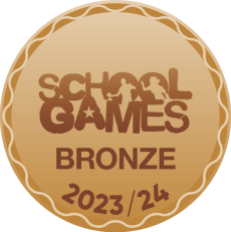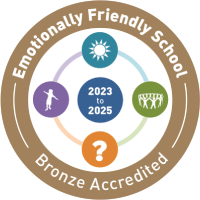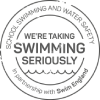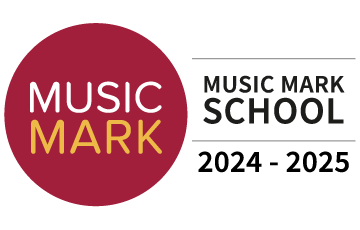Early Reading
Learning to read at Wardley CE Primary
Teaching children to read and write independently, as quickly as possible, is one of the core purposes of our primary school. These key skills not only hold the keys to the rest of the curriculum but also have a huge impact on children’s self-esteem and future life chances.
Reading and writing are both two part processes: readers decode and comprehend, writers create and encode. In one respect, decoding and encoding are the ‘mechanical’ skills that children need to master in order to be able to comprehend what they read and write creatively. Research has shown that by teaching phonics thoroughly and rigorously to children, we can ensure that they use this knowledge to decode effortlessly and automatically. This means all energy can be focused on understanding and enjoying what is read and on composing and creating fantastic writing. Ofsted: Reading by six
How do you teach a child to read?
The English spelling code is one of the most complex in the world. It has evolved over hundreds of years and has had many different influences. As a result, our words are made up of combinations of 44 different sounds but many of these sounds are spelt in different ways in different words. Furthermore, we only have 26 letters to write these sounds down. This can lead to real confusion for children as letters combine together in different words to make different sounds. For example, the letter ‘a’ sometimes makes the sound /a/ (c-a-t), or, with other letters, the sound /ay/ (d-ay) or the sound ‘air’ (f-air). This can be overwhelming.
In order to help the children conquer this complex code, we teach it to them systematically, using a system based on a programme called Read Write Inc.
We start by teaching children to read the first thirty sounds (Set 1 Sounds) and to be able to blend these sounds to read words (i.e. to know that the sounds c/a/t can blend together to read the word cat). Once they have conquered this skill, they start reading stories and texts that have words made up of the sounds they know. This means that they can embed and apply their phonic knowledge and start to build their reading fluency. At the same time, we teach them how to write the sounds and use this knowledge to spell words, leading to writing short sentences.
As their confidence and fluency grows, we start to introduce more sounds (Set 2 and then 3) and the children read texts with increasingly more complex sounds and graphemes (different ways of spelling the sounds, e.g. /igh/, /ie/ or /ay/, /ai/). They learn that a sound can be written using 2 or 3 or even 4 letters. We call this a grapheme (e.g. igh represent the /i/ sound in the word night). Equally they learn to use these graphemes to spell words.
In short, the essence of our reading programme is based on the belief that by reading the sounds, you can read the words, and so the story. But, if it is hard to understand what sounds the words are made up of, it is hard to read the words accurately and so it is hard to understand what has been read. Additionally, if it takes too long to work out what the words are, it is difficult to understand the story as the meaning gets ‘lost’ in the individual words. Fluency and accuracy are key to comprehension.
What about comprehension?
Being able to decode a text alone is not enough. Children need to comprehend what they are reading and need to be actively taught key comprehension skills from a very early age. We do this through comprehension activities linked to the stories the children come to read with Read Write Inc, and also through a range of different literacy activities based around core texts shared with the children in class. We know that good readers question, check and engage with their own understanding – these are some of the skills we seek to develop. We know that decoding and comprehension should not be taught in linear progression but need to be taught simultaneously.
Why does Wardley teach Read Write Inc
We believe that, children are only successful at school if they have learnt to read well. Our aim is to get children reading sufficiently to enable them to access the whole curriculum. It provides a lively, structured, and above all, rigorous approach to the teaching of phonics- and literacy as a whole. The programme was devised so that no child would slip through the net.
A reminder of some of the phonics terminology...
Phoneme - The smallest unit of sound. There are approximately 44 phonemes in English. Phonemes can be put together to make words.
Grapheme - A way of writing down a phoneme. Graphemes can be made up from 1 letter e.g. p, 2 letters e.g. sh, 3 letters e.g. tch or 4 letters e.g ough.
Decoding – Reading is looking at the graphemes, saying the sounds then blending to make the word.
Encoding – Spelling is saying the word, then the sounds, then writing it down.
How can we help at home?
There is much you can do to support your child at home.
- Talk to them! The most important thing you can do is to talk to your child and listen to them when they are talking to you. Try to extend their vocabulary range and their skill at talking in increasingly more complex sentences. For example, try to teach them alternative words for ideas, or nouns they already know.
- Read to them and always discuss the story you are reading to try to build your child’s comprehension skills and understanding.
- Practice the sounds they know at home. There are flashcards available to buy from the office.
- Listen to your child read every night. Find a quiet time to hear your child read and use lots and lots of praise to encourage them.
- For children in Reception, scan teh attached Set 1 QR Codes. For children in Year 1, scan the attached Set 2 and Set 3 QR codes. These lead to 10minute instructional videos which are designed to help your child learn to read. They also mirror the techniques we use in the classroom.
Look out for our Reading Workshops for parents and carers, where you can find out more details of how to help at home.
If you need further advice or help with how best to help, please do ask Mrs Flanagan who will be really happy to meet with you.
Parent feedback:
After a Stay and Read Session some of the parents kindly fed back some of their thoughts;
“I really enjoyed coming in today, it was lovely to see how the children are taught their sounds. Heidi has come on so much and I am really happy with the work she has done.”
“I loved being in school this morning and being able to see the children doing Read Write Inc.”
“Fabulous teaching and learning!”
“Made fun for the children, using actions and objects. Helpful to watch a session to understand some of the terminology!”
Please keep your eyes peeled to find out when our next batch of Stay and Read sessions are happening!
Useful Links;
Read, Write, Inc Guidance for Parents







